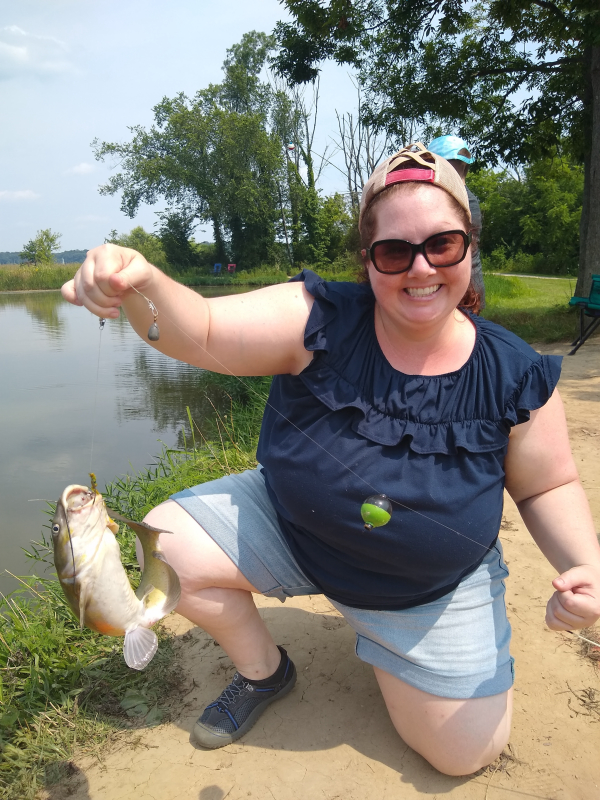
|
COLUMBUS, Ohio – Summer is a great time for anglers to pursue catfish in Ohio, according to the Ohio Department of Natural Resources (ODNR) Division of Wildlife. The Buckeye State’s lakes, rivers, reservoirs, and streams are home to four types of catfish: blue, bullhead, channel, and flathead.
The Division of Wildlife regularly stocks more than 300,000 channel catfish in more than 100 different reservoirs. Channel catfish also occur naturally in most of Ohio’s rivers and streams and thrive in Lake Erie and Sandusky Bay. A popular sport fish, they typically range between 15 and 25 inches in length and may weigh as much as 10 pounds. In large reservoirs and rivers, channel catfish can be much bigger, with a few trophy fish reaching the 26-inch requirement for Fish Ohio recognition.
The largest catfish found in the state is the blue catfish, which regularly reaches 30-40 inches. Ohio’s state record blue catfish weighed 96 pounds. A blue catfish that is at least 35 inches long qualifies for Fish Ohio recognition. This species is found in the Ohio River and is stocked in Clendening Lake, Caesar Creek Reservoir, Hoover Reservoir, and Seneca Lake by the Division of Wildlife, with Hoover offering anglers the best chance of success. More than 150,000 blue catfish were stocked in 2021.
Flathead catfish present a challenge for anglers as they can weigh up to 80 pounds, although most will be between five and 40 pounds with lengths up to 50 plus inches. They are found in Ohio’s larger rivers and reservoirs; the Muskingum watershed is a hotspot. Anglers will need heavy tackle to reel in a trophy flathead, with most fish being caught near underwater structures and drift piles. Flatheads over 35 inches in length qualify for Fish Ohio recognition.
Ohio’s three species of bullhead catfish— black, brown, and yellow— can be found in a variety of waters statewide. Smaller than other catfish species, bullheads average between 10 and 12 inches in length. Bullheads feed aggressively and target a variety of baits, and for this reason can be exciting to catch. Bullhead catfish must be 14 inches long to qualify for Fish Ohio recognition.
The pursuit of catfish is at its best in the summer months when they feed actively. Catfish spend most of the day in deeper water and may not be responsive to bait, but they move into shallower water to feed at night. Shallow flats next to deep holes and along beaches provide concentrations of feeding catfish. Night fishing during the summer usually elicits success, and Ohio’s catfish provide not only excellent recreation but also make great table fare.
Catfish are omnivorous, feeding on a variety of food types. Blue and flathead catfish readily feed on smaller fish and can be caught on gizzard shad, suckers, or chub. For channel and bullhead catfish try shrimp, chicken livers, and nightcrawlers. A strong sense of smell is a common trait among Ohio’s catfish; using scented baits will result in greater catch rates.
Anglers looking to target catfish this summer can find fishing tips by speciesand fishing reports and forecasts at wildohio.gov. Beginner anglers can access a variety of other resources for getting started on the Wild Ohio Harvest Community page. The Find a Destination tool on ohiodnr.gov can help you find a public fishing area near you.
A fishing license is required for anglers 16 years old or over, except during Ohio’s free fishing days on Saturday and Sunday, June 18-19. More details can be found in the 2022-23 fishing regulations, available online, on theHuntFish OH mobile app, or from a license sales agent. The Division of Wildlife encourages anglers to be safe on the water this summer and exercise caution, particularly when night fishing or fishing from a boat.
The mission of the Division of Wildlife is to conserve and improve fish and wildlife resources and their habitats for sustainable use and appreciation by all. Visit wildohio.gov to find out more.
ODNR ensures a balance between wise use and protection of our natural resources for the benefit of all. Visit the ODNR website at ohiodnr.gov.
-30-
For more information, contact:
Brian Plasters, Division of Wildlife
(614) 601-3836